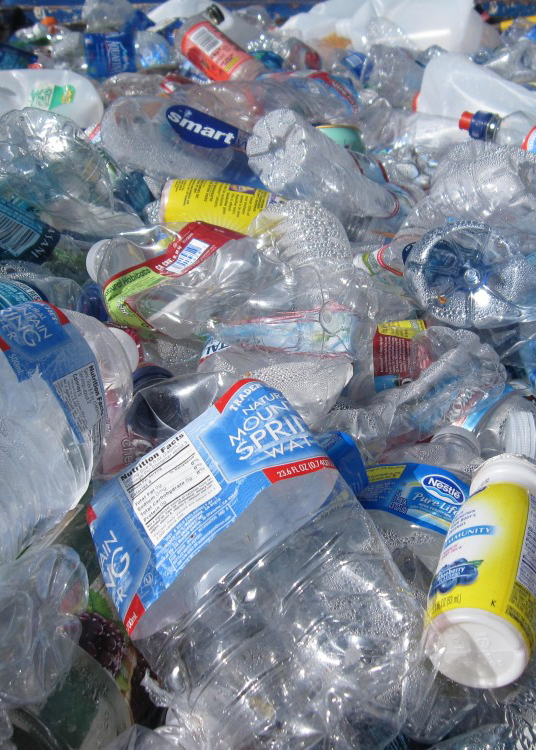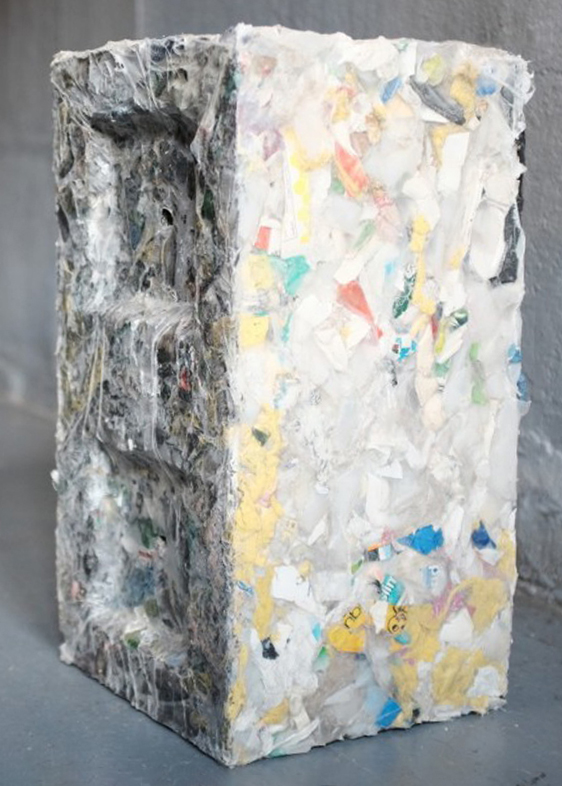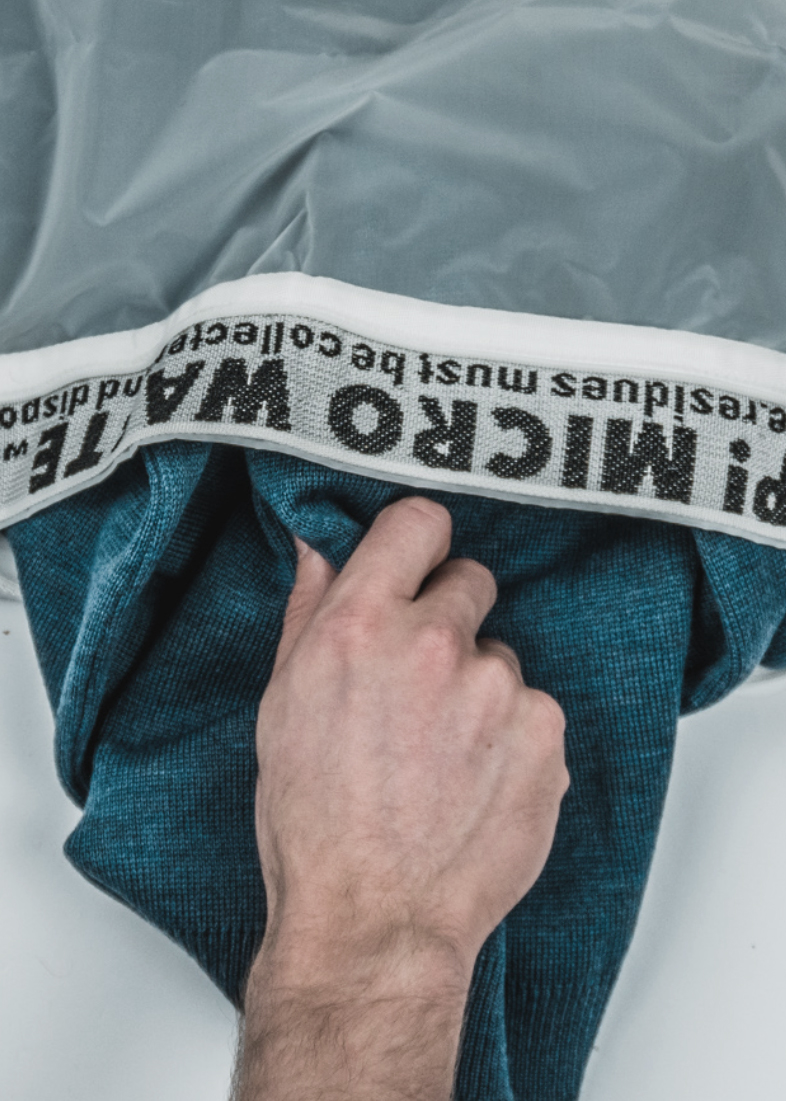3 Reasons Fashion Should Be Plastic-Free (Including Recycled Plastic)

Stunning photo by Velizar Ivanov via Unsplash
Affiliate Disclaimer
This website is supported by its audience and contains affiliate links. An affiliate link means I may earn advertising or referral fees at no extra cost to you if you make a purchase through these links. (read more)
There’s a booming movement with upcycling post-consumer plastic (ex. water bottles) into wearables. Brands like Everlane, Madewell, Eileen Fisher, Adidas, and Patagonia have either been doing it for years or have suddenly jumped on board with this innovation. Everlane recently came out with their ReNEW collection turning plastic bottles into puffer jackets, fleece pullovers, and parkas. Eileen Fisher, an OG in a sustainable fashion, also uses recycled fibers from plastic water bottles. Adidas’ Parley shoes are made from ocean plastic. The list goes on and on.
The majority of clothing today is made of synthetic petroleum-based (plastic) fibers like polyester, nylon, acrylic, and spandex. But plastic is better suited for industries where it will have longevity, and the ability to be reshaped into something else again. The construction, medical, automotive, or aviation industries are much more responsible areas for our recycled plastic. An example is ByFusion, a company from New Zealand on a mission to find a deep solution to plastic that already exists. They turn recycled plastic into bricks to create housing. This reduces the amount of local environmental pollution and enables individuals, communities, and companies to transition plastic waste into something useful. This advanced new building material, which accepts ALL types of plastic, can’t bear as much weight as concrete, but it has great acoustic and thermal insulation properties. Plus, the bricks have a 95% lower emission footprint than concrete blocks. They are ideal for use in road projects or fill-in building frames. This is an incredible innovation that could immensely benefit underdeveloped communities where pollution is high. ByFusion is just one of many companies finding long term solutions for plastic waste.


Photos from ByFusion
AD
THERE ARE THREE BIG ISSUES WITH PLASTIC TURNED FIBER…
But first, why did we even
The most popular fibers in the world are synthetic, accounting for 65% of the world’s production versus only 35% for natural fibers. Approximately 70% of synthetic fibers are made from polyester, otherwise known as polyethylene terephthalate (PET) in textiles.
1. PLASTIC FIBERS BECOME UNRECYCLABLE
Once the post-consumer plastic is crushed into pellets and then spun into yarn ready to be weaved into fabric, the fiber hits its final stage. Plastics cannot indefinitely be recycled – a common misconception. Once the fibers are woven into fabrics most of them are rendered non-recyclable. This is because almost always the fabrics have a chemical backing, lamination, or another type of finish. Or they are blends of different synthetics like polyester and nylon. The fabric is unsuitable for the mechanical method of recycling because it cannot separate the various chemicals to produce recycled yarn. Maybe one day we will have the money and factories to do such a task but as of now, it is not possible. Since recycled fabric becomes unrecyclable and it’s certainly not biodegradable it is only a short-term solution for diverting post-consumer plastic from landfills, but ultimately that’s where the clothing will eventually end up.
The process of creating fiber out of post-consumer plastic.
2. SYNTHETIC CLOTHING SHEDS MICROPLASTIC FIBERS
When synthetic clothing is washed tiny microplastic fibers shed during the wash cycle. These little microplastic fibers make their way through the waterways and eventually into our lakes, rivers, and oceans. Plastic microfibers represent up to 85% of the plastic pollution found on shorelines around the world. You’ve heard the statistic, at this pace by 2050 we’ll have more plastic than fish in the ocean. Not to mention fish eat these plastics and they eventually make their way up the food chain on to our plates. It was found that 73% of the deep-sea fish caught in the Northwest Atlantic had microplastics in their stomachs. Right now, our best solution for this problem is washing synthetic clothing in a microfilament bag. These bags collect the microplastic fibers so they can easily be disposed of properly. You could also try a Cora Ball, but these only catch up to 35% of microplastic fibers per load. Recycled plastic fabric would be no different in shedding microplastics, another reason clothing should stay plastic-free.
Photo by The Guppy Friend.
3. SYNTHETIC CLOTHING COULD BE UNHEALTHY
On another side of this topic are the health effects of wearing synthetic clothing. Synthetic fibers are ultimately derived from petroleum which could wreak havoc on the skin, especially clothing designed for
THE SOLUTION? REVERTING BACK TO NATURAL FIBERS
Ditching synthetic fibers, even recycled synthetic fibers, for natural fibers such as cotton, hemp, silk, wool, and linen from organic farmers is a more environmental and health-conscious choice. If these natural fibers were to end up in the middle of a woods or on a shoreline they would degrade like a boss, leaving little to no impact on the environment around them. This is how fashion can be circular. ☾
RELATED POST: Slow Fashion Brands: 100+ Labels to Love

Photo by Mia Moessinger via Unsplash.
⊙








0 Comments